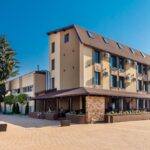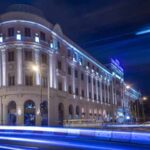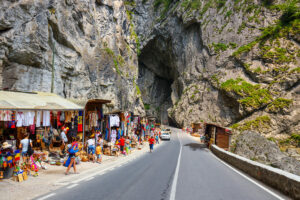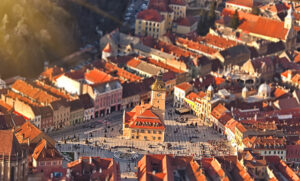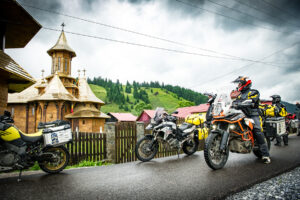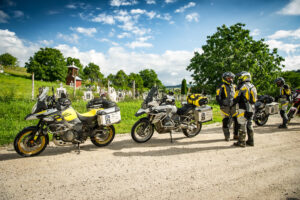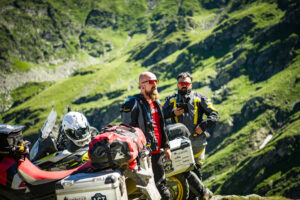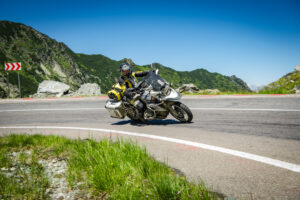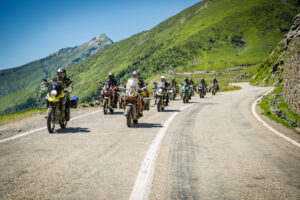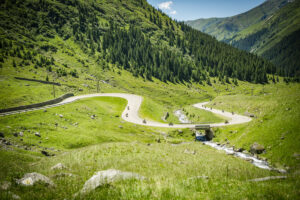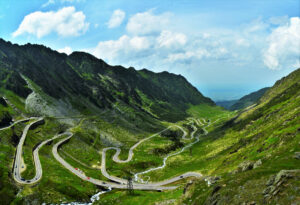
Key Information
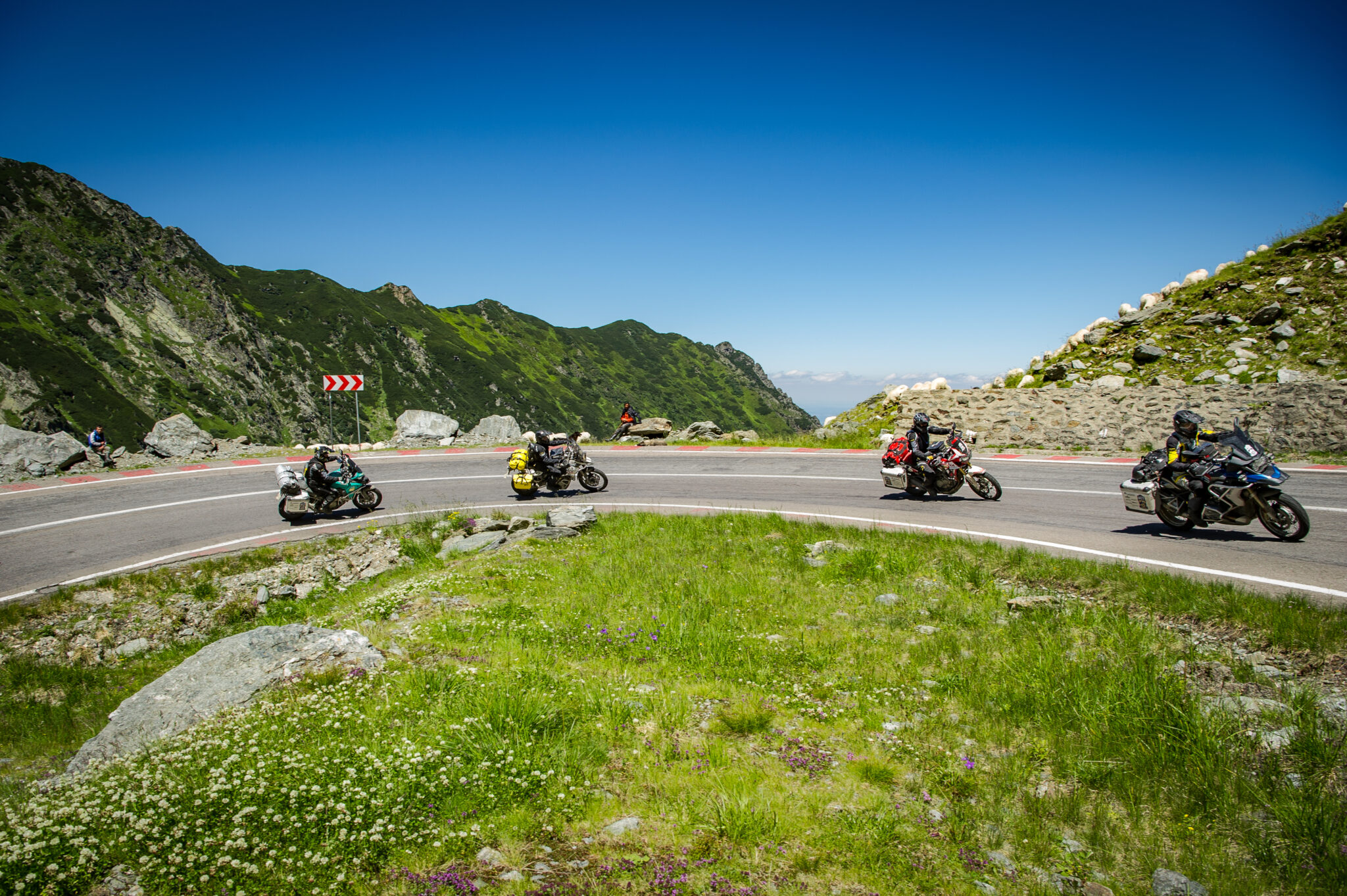
“We are in Transylvania… Our ways are not your ways, and there shall be to you many strange things…” – Dracula
Introduction – Romania, once labeled the “Wild West of Europe” during its communist era, has transformed into a captivating destination. With enchanting landscapes filled with countless medieval castles and monasteries, the country boasts a rich culture and history, complemented by warm, welcoming locals. Its fantastic roads wind through spectacular mountain passes, revealing breathtaking views unique to this region. Home to 14 National Parks, 6,000 brown bears, 9 UNESCO World Heritage Sites, and a language that dates back over 1,700 years, Romania offers an extraordinary experience. This tour is designed to showcase the best of Transylvania and the Carpathians as we journey clockwise around the horseshoe-shaped Carpathian Mountains.
Our first visit to Romania, specifically the Carpathians and Transylvania, was in 2012, followed by a return in 2013 during our “Circumnavigation of the Black Sea” tours. Romania emerged as one of the standout highlights of our travels, igniting a strong desire to return and delve deeper into this beautiful and enchanting country.
Some Highlights include:
- Viscri village – an authentic Transylvanian village.
- Sighisoara – where we ride on narrow streets and listen to great stories about the place where Vlad the Impaler, known as Count Dracula, was born. We visit the ancient Sighisoara fortified citadel together with it’s Clock Tower, The Torture Room and The Medieval Weapon Collection. We spend the night in the ancient city listening the famous legends of Dracula.
- Peles Castle – one of the most beautiful castles in Romania.
- Red Lake – one of the most spectacular lakes in Romania.
- Famous Praid pass – arguably the most beautiful pass in Romania – but truthfully their all beautiful!
- Prislop Pass, Cheia Pass, Urdele Pass, Tihuta Pass, Rasnov Pass,Transbucegi Road, Transceahlau Road, Transrarau Road – up there with the best in Europe.
- Transalpina Road – The highest and longest pass in Romania – perfect for motorcycle riding!
- Transfagarasan Pass – Is according to Top Gear:” The most beautiful road in the world” and needs little introduction!
- Rucar – Bran pass – Has the most spectacular natural views in Romania.
- Neamt Monastery – one of the few fortified churches in Europe.
- Step inside Voronet Monastery – the most important building of Stefan the Great, Romanian great leader, with great paintings of biblical and historical characters, royal pews and cloths belonging to the sixteenth century!
- Maramures Region – a fairytale land hunted by peasants and mysteries. We ride with our motorcycles towards the highest monastery built in 1390, Barsana monastery.
- Corvinilor (Huniazilor) Castle – one of the most impressive castles in Europe.
- Dracula’s Castle – The most famous Castle in Romania due to “Count Dracula’ s Legend of Vampires”.
- Brown Bears – with an estimated 6000 roaming wild amongst Romania’s 14 National Parks.
- Black Church Brasov – One of the oldest churches in Romania which went through a fire in the medieval times.
- Rasnov Citadel – One of Romanian’s collection of fortified Castles build in 1211 by the by Teutonic Knights.
- Citadel Valley Cave – One of the most beautiful caves in Romania; in the summer you may listen to classical concerts inside the cave.
- Fagaras Citadel – A historical monument surrounded by a defensive moat, where today tourists can ride the boats.
- Ride along the Danube – a natural border between Romania & Serbia.

More Information
Suggested flights:
- Arrive Budapest Tuesday 26th August
- Ryanair depart Dublin 08:45
- Aer Lingus depart Dublin 07:45
- Depart Budapest Monday 8th September
- Ryanair depart 15:45
- Aer Lingus depart 12:30
Itinerary subject to change for 2025.
| 26-Aug | Ireland | Budapest |
| 27-Aug | Budapest | Baia Mare |
| 28-Aug | Baia Mare | Vatra Dornei |
| 29-Aug | Vatra Dornei | Vatra Dornei |
| 30-Aug | Vatra Dornei | Sighisoara |
| 31-Aug | Sighisoara | Sighisoara |
| 1-Sep | Sighisoara | Brasov |
| 2-Sep | Brasov | Brasov |
| 3-Sep | Brasov | Transfagarasan |
| 4-Sep | Transfagarasan | Transfagarasan |
| 5-Sep | Transfagarasan | Pecinisca |
| 6-Sep | Pecinisca | Timisoara |
| 7-Sep | Timisoara | Budapest |
| 8-Sep | Budapest | Ireland |
Day 1:
Departing Budapest and Hungary, we head east and northeast to the Maramureș region in northwest Romania, where age-old traditions remain integral to daily life. The residents here have remarkably preserved the rural culture and crafts of their Dacian ancestors. Maramureș villages are known for their distinctive wooden churches featuring tall spires and shingled roofs. Woodlands cover more than four-fifths of the region, making it clear why wood has historically been and continues to be the primary medium for local artisans. Intricate wood carvings adorn eaves, entryways, and windows, while hand-woven carpets and detailed embroidery embellish the traditional folk dresses still worn by the locals.
Day 2:
Day 3:
Today, we journey into the heart of Romania, exploring the enchanting region of Transylvania. Our adventure begins with a smooth ride along a dam beside the river, before we delve deep into the forests. Scenic landscapes and well-maintained roads await us as we meander south through the Bicaz Gorges, Praid Pass, and onward to the Bogatti forests. The road through the gorges is one of Romania’s most stunning routes, offering numerous photo opportunities and local bazaars where you can find crafts made by Romanian and Hungarian artisans. The gorge twists steeply upward for 5 kilometers, cutting through towering 300-meter-high limestone cliffs. At one point, the narrow mountain road runs precariously beneath overhanging rocks in an area known as the “neck of hell.” We conclude our long day in Sighișoara, one of the seven towns (known as “Siebenbürgen,” or seven castles) founded by German settlers in the 12th century. Sighișoara features a charming old town, and a stroll through its streets will lead you to the eerie house where Count Dracula is said to have been born!
Day 4:
Today our route takes us through some beautiful and un-spoilt villages on route to Brasov. Fringed by the peaks of the Southern Carpathian Mountains and resplendent with gothic, baroque and renaissance architecture, as well as a wealth of historical attractions, Brasov is one of the most visited places in Romania. Founded by the Teutonic Knights in 1211 on an ancient Dacian site and settled by the Saxons as one of the seven walled citadels, Brasov exudes a distinct medieval ambiance and has been used as backdrop in many recent period films. The location of the city at the intersection of trade routes linking the Ottoman Empire and western Europe, together with certain tax exemptions, allowed Saxon merchants to obtain considerable wealth and exert a strong political influence in the region. Brasov is home to one of the narrowest streets in Europe. The Rope Streetis approximately four feet wide and it links CerbuluiStreet with PoartaSchei Street and was initially used as an access route by firefighters. A stroll around the old Town Hall Square is highly recommended where you can admire colorfully painted and ornately trimmed baroque structures. Take a peek inside the Black Church, the largest gothic church in Romania. Its name derives from damage caused by the Great Fire of 1689, when flames and smoke blackened its walls. The interior is impressive and well-kept and houses one of the largest organs in Eastern Europe.
Day 5 – Rest Day with optional ride-out to Bran Castle and Bucegi Mountains
Bran Castle – Surrounded by an aura of mystery and legend and perched high atop a 200-foot-high rock, Bran Castle owes its fame to its imposing towers and turrets as well as to the myth created around Bram Stocker’s Dracula. A little history. Although Stoker never visited Transylvania, the Irish author relied on research and his vivid imagination to create the dark and intimidating stomping ground of Count Dracula, leading to persistent myths that it was once the home of Vlad Tepes (also known as Vlad the Impaler or Vlad Dracul), ruler of Walachia. While the association with Dracula is sketchy at best, the castle continues to hold a strong attraction for all fans of the Count. Because Bran Castle is the only castle in all of Transylvania that actually fits Bram Stoker’s description of Dracula’s Castle, it is known throughout the world as Dracula’s Castle. From 1920 to 1957 Bran served as royal residence, a gift of the people of Brasov to Queen Marie of Romania. The castle is now a museum open to tourists, displaying art and furniture collected by Queen Marie. Narrow winding stairways lead through some 60 timbered rooms, many connected by underground passages, which house collections of furniture, weapons and armor dating from the 14th to the 19th centuries. Well worth the tour!
Day 6
Arguably the two main reasons why most people travel to Transylvania are on offer today as we traverse the Bran – Rucar Pass and the magnificent Transfagarasan road. More than 150 kilometres in length the Transfagarasan Highway is Romania’s most spectacular and best known road and, thanks to an appearance on BBC Top Gear in 2009, now one of the country’s most popular tourist attractions. Fully open only from June to October, the road’s highest point is at 2042 metres: the tunnel which links the northern and southern sides at Lake Balea (Balea Lac). The Transfagarasan was built between 1970 and 1974 by military forces. After the 1968 invasion of Czechoslovakia by the Soviets, Nicolae Ceausescu had it built as a strategic military route to cross the mountains in the event the Soviets attempted a similar move into Romania. The builders used 6000 tons of dynamite to clear a path for the road on the northern side of the mountains (this is the most spectacular) and on the tunnel. 40 soldiers lost their lives during construction. Facts and figures tend to vary but you get the jist.
Day 7 Rest Day – with optional rideout
The highlight today is a motorcyclists dream as we traverse the TransAlpina, known locally as ‘the Kings Road’ and sometimes referred to as ‘The Devils Path’. The TransAlpina road (DN67C) is the highest road in Romania and one of the famous Romanian high altitude roads. With a length of 146 km, it crosses the Southern Carpathian Mountains and reaches a maximum altitude of 2,145m above sea level at PasulUrdele. It is considered one of the most spectacular roads of the Carpathian Mountains and offers breathtaking views together with an exhilarating ride.Arguably the oldest road over the Carpathian Mountains, TransAlpina was built at the beginning of the 2nd Century AD by the Roman legions during their war campaign to conquer Sarmizegetusa – the capital of Dacia (modern-day Romania). After the conquest of Dacia, the Romans used the TransAlpina to transport gold to Rome extracted from Transylvania.
Sibiu, voted Cultural European Capital in 2007, was the largest and wealthiest of the seven walled citadels built in the 12th century by German settlers known as Transylvanian Saxons.Sibiu’s Old Town retains the grandeur of its earlier days when rich and powerful guilds dominated regional trade. Like Sighisoara and Brasov, it has a distinctly Germanic feeling. Sections of the medieval wall still guard the historic area, where narrow streets pass steep-roofed 17th century buildings with gable overhangs before opening into vast, church-dominated squares such as Great Square and Little Square. Renowned composers Strauss, Brahms and Liszt all played here during the 19th century, and Sibiu has stayed at the forefront of Romania’s cultural scene through its festivals of opera, theatre and film, as well as rock, jazz and more. The country’s first hospital, school, library and pharmacy were all established here, and locals are justly proud of the spirit of enterprise that endures to this day.
Day 8
Today, we ride through several national parks as we reach the southernmost point of our tour, where the majestic Danube serves as a natural border between Serbia and Romania.
Day 9
Today we follow the banks of the Danube west and north through more national parks on route to Timisoara.
Day 10
After a short ride to the Hungarian border, we leave Romania behind in pursuit of Budapest. For those looking to relax or extend their holiday, we highly recommend spending a couple of days in Budapest either before or after the tour.
Divided by the Danube, the city features Buda on one side, known for its Ottoman-era thermal baths at the foot of the stunning Gellért Hill, the royal palace, and Matthias Church, all exuding a sense of calm. On the other side is Pest, vibrant and lively, home to a wealth of museums rich in cultural and historical treasures, remarkable Secessionist architecture, and the majestic Parliament building, considered one of the most magnificent in the world. Saint Stephen’s Basilica, surrounded by pedestrian streets, and the recently renovated Jewish Quarter and Palace District add to its charm. Beyond its historical significance, Budapest boasts a thriving cultural scene with world-class festivals, theaters, museums, concert halls, and sporting events. For those seeking relaxation and nature, Margaret Island serves as the city’s “green heart,” regarded by many as one of Europe’s finest city parks, perfect for strolling, various sports, swimming in outdoor pools, or soaking in thermal baths and spas. Food lovers will not want to miss the celebrated delights of Hungarian cuisine!
We will be providing a more detailed itinerary on arrival to include hotel info and GPS co-ordinates.
Please note that this is an outline route and maybe subject to change.
Included in this trip:
- Return transport of your motorcycle from our base in Gorey, Co. Wexford to / from Budapest, Hungary.
- Experienced tour guide(s).
- Bed & Breakfast accommodation in quality hotels and guest houses.
- 4 evening meals.
Not Included:
- Lunch and evening meals except where stated.
- Flights plus any travel costs to get to the start and from the finish point for the tour.
- Personal travel, accident and medical insurance (covering matters such as medical expenses, repatriation, cancellation, curtailment, loss or damage to property).
- Motorcycle insurance cover, motorcycle breakdown cover or recovery costs.
- Entrance fees to sights and parks, optional local excursions or local activities, (except where stated).
- Lunches or snacks (except where stated). Any meals whilst on board ferries. Evening meals on rest/optional ride out days.
- Personal spending money, tips, souvenirs or other extras.
- Personal documentation (eg visas, passport), vaccinations, personal taxes, border crossing fees, motorcycle documentation
- Costs of motorcycle repair (parts, labour or other related costs), tyres.
- Fuel, oil & other motorcycle consumables.
- Toll road fees, traffic fines or other charges relating to breach of the law.
- Any other item not specifically included in the price.
Hotels
As with all our guided tours we carefully select very good standard 3 or 4* hotels. Over the years we have built up a vast selection of tried and tested hotels around the world and we select hotels for their character and service rather than just on their star rating. Hotel standards vary all over the world and a 4* in Africa or South America is not always the same as in Europe. In some more remote locations, we may use equivalent 3* hotels or the best available in the area, which could be a more family run establishment, with local character.
Pre trip we provide you with Tour Specific Information that gives you detailed information about how to prepare and plan your tour, and what to expect when on tour. These are a few FAQ that many people have. If you have any further queries or concerns please do not hesitate to contact us.
What bike is suitable to bring?
Generally speaking we recommend adventure or touring style motorcycles as the most suitable. However, sports, sport-touring and cruiser motorcycles may also be suitable subject to you being comfortable riding it for the distance and duration of the tour and that it has been properly prepared and adequately serviced with good tyres.
What riding experience do I need?
Generally speaking we recommend all participants to be experienced tourers in Europe and/or beyond. Obviously, some destinations are easier than others, as classified by our difficulty ratings, and should you have concerns please do not hesitate to contact us. It is your responsibility to ensure your motorcycling skills are up to the requirements for this tour. Obviously advanced riding skills increase enjoyment factor and reduce risk.
Do I have to ride in a group?
No! We do not make you ride in convoy and we offer you the freedom to decide how you would like to ride. However, we find most people prefer to ride with the group without the need to navigate. We use either the ‘drop off’ or ‘buddy’ systems when group riding (depending on country and complexity of navigation); these are tried and tested systems of group riding and allow riders to ride at their own pace. Full details are provided at pre-trip briefings. Daily departure times are set every evening for the following morning depending on the days route and points of interest. If you prefer to ride on your own, we provide you with a map and route cards with recommendations for lunch or coffee stops and hotel information. We offer a very flexible approach with an emphasis on maximum enjoyment.
Is this ride suitable for a passenger?
Yes. Pillion passengers should be experienced tourers / travellers.
What is the average group size?
Our groups are normally between 8 – 14 riders (some riders will have passengers). Most riders are from the Ireland, but we do also have overseas riders who may take part.
What documents do I need?
You will need your original documents as follows:
- Passport and Driving Licence. Passengers only need their passport. As a general rule, passports should be valid for at least 6 months after the end of the tour; however, this may be shorter in some European countries.
- If you are bringing your own motorcycle, you will also need your motorcycle registration document (RF101 / log book) and your motorcycle insurance.
- In addition, you must have valid travel/medical insurance.
- Visas as required Please ensure that you are fully aware of all passport and visa requirements and that you allow adequate time to obtain them.
What will the weather be like?
Depending on season / time of year we will advise expected weather conditions in the pre-trip information and also suggest the most suitable gear based on our experience. It is imperative that tour participants have suitably adequate gear. Please note our tour calendar is carefully planned taking into account the most suitable seasons / local weather for the destination. However, as much as we would like, we cannot always guarantee the best weather. Particularly considering the un-predictable climates the world has been experiencing.
What about my health when I am abroad?
You need to be physically fit and healthy and also take the necessary health precautions. It is essential for you to consult your doctor or travel clinic for up-to-date medical travel information prior of travel, particularly if you have a pre-existing medical condition. Please ensure that you are fully aware of all official travel advice, local customs, current affairs, travel requirements and medical/travel advice. Please check with your GP regarding recommended inoculations.
Do I need Travel / Medical Insurance?
It is a condition of you travelling with us that you are adequately insured. Your insurance policy must cover you for the costs of any medical expenses, medical treatment or repatriation needed, due to injury or illness on this trip, including those that occur whilst motorcycle touring, either as the rider or a passenger. It is important that your insurance company understands that the main purpose of your trip is motorcycle touring, using your own large capacity cc motorcycle or a rental motorcycle. Your insurance must cover you for the full duration of the trip and for all countries we travel through.
In addition, we strongly recommend that your insurance policy has cover for loss or damage to your personal belongings, delay at your outward or homeward point of departure, personal liability, overseas legal expenses and cancellation and curtailment. We do not refund your deposit simply because you failed to take out insurance in sufficient time. Some travel insurance policies do not cover motorcycle travel over a certain cc or for a prolonged duration.
Minimum Numbers
We require a minimum number of 8 riders on this tour. If we do not have this number of bookings, then we reserve the right to cancel the tour.
Preparation for Shipping (if applicable)
- All rider/pillion gear including boots and helmets should be packed into a kit/sports bag and labelled with the owners name, bike make/model and registration. One kit bag permitted per person.
- Please note loose items or items tied onto the motorcycle will not be transported.
- Bin liners, rubbish bags, cardboard boxes etc are not acceptable.
- Motorcycles should be in a clean and presentable condition both for outbound and return shipments. If your motorcycle is considerably dirty post trip please wash it before returning it.
- All Luggage (hard and soft panniers) should be left unlocked and removable from the motorcycle if necessary for transport purposes.
- Alarms should be switched off or in “Ferry” mode for transport purposes.
- Fuel level should be kept relatively low. All our depots are within a few km of fuel stations.
- Keys for both the motorcycle and luggage should be left with the motorcycle.
- At handover we will require a signed customs declaration form and a photocopy of the registration document / log book stapled together. Customs declaration from will be emailed pre-shipment. These should only be handed over in hard copy at time of delivery.
- Do not email copies in advance.
- We will not accept original copies of registration documents/log books.
Overlanders accepts to make arrangements so that travel services, such as transportation and accommodation facilities and other services, will be provided to the customer in accordance with the travel schedule(s) predetermined by Overlanders.
Booking:
• Overlanders may accept a booking online, via telephone or email. To confirm a booking a deposit is required – once the deposit is received the booking is confirmed. Spaces will not be reserved without deposits.
• Overlanders reserve the right to cancel an online booking or refuse a booking at any time.
Payments & Fees:
• All payments must be made in full at least 60 days prior to the shipment date. Failure to pay outstanding balances prior to this date results in automatic cancellation.
• Deposits amounts are NON-REFUNDABLE or transferrable within 60 days of shipment date
• Exceptions may be made on a case per case basis considering demand / cancellation list etc.
• We strongly suggest having adequate Travel Insurance in place at the time of booking.
Flights:
• It is your responsibility to confirm suitable flights / collection times. Please contact us for recommendations. Should an airline change their schedule, we will do our best to facilitate but it may not be possible considering our shipping schedule/logistics.
Costs Included in the Travel Fee:
• Transportation fees and charges for transportation facilities used are those expressly indicated in the travel schedule.
• Re: Guided Tours – please see the specific tour brochure for a list of inclusions and exclusions
Costs not included in Travel Fee:
• Any expenses other than those listed in the inclusions will not be included in the travel fee.
• Re: Guided Tours – flights, visas, and any other expenses related to getting to the starting point and from the finishing point are not included in Travel Fees (unless otherwise stated)
Passport & Visa & Travel Requirements:
• Please ensure that you are fully aware of all passport and visa requirements and that you allow adequate time to obtain them. We personally recommend that you travel with a passport that has a minimum validity of 6 months remaining at all times.
• Please ensure that you are fully aware of all official travel advice, local customs, current affairs, travel requirements and medical/travel advice. Please check with your GP regarding recommended inoculations.
Travel Insurance:
• It is imperative that adequate Travel Insurance cover (including medical repatriation) is activated at the point of confirming your booking. Some travel insurance policies do not cover motorcycle travel over a certain cc or for a prolonged duration.
Cancellation/Amendments/Refund Policy:
• Please note that all payments and deposits are non refundable nor transferrable if cancellation accrues within 60 days of the shipment / tour date (whichever comes sooner).
• Where possible we will try to accommodate any amendments you wish to make.
• In the event of curtailment no refunds shall be made.
• Refunds may be processed via the original method of payment, except for cash transactions where refunds will be provided by cheque.
Feed back / Complaints:
• Customer satisfaction is very important to us and to help us further improve our service we value any feedback both positive and negative. Please email info@overlanders.ie

